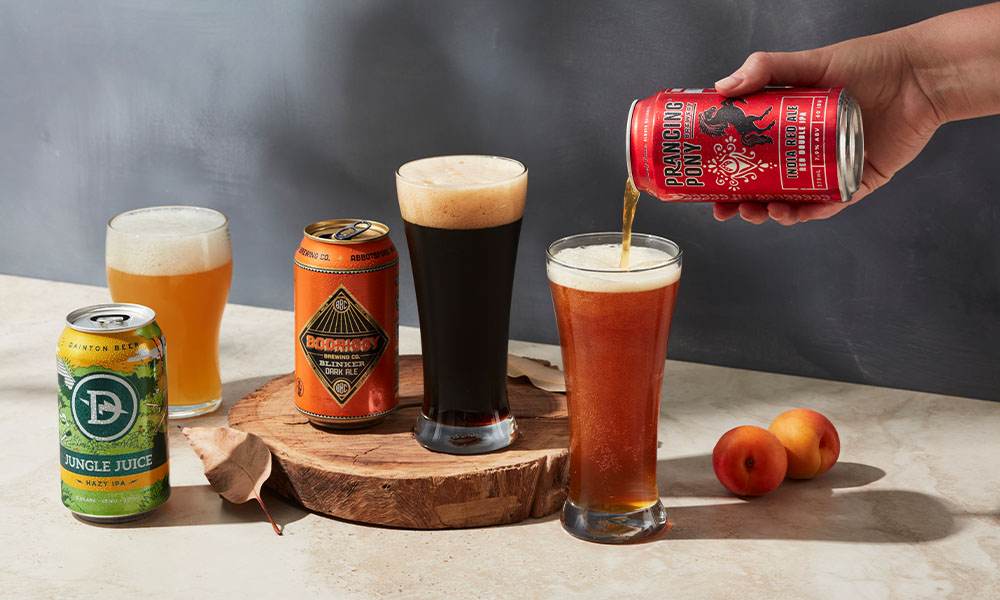

THE BREW
- The Brew
Love Bugs, Wild Yeast and Big Hops
Read Time 4 Minutes
Posted 31 Aug 2022
By winVintage
Hops, bacteria and brettanomyces. These three ingredients are all historically crucial to beer, but after years of industrialisation in the brewing industry they were almost left behind as a footnote.


While hops has a small role in the most popular global beer style, lager, it is far from a focus. Bacteria and brettanomyces certainly have no role in modern industrial lagers and the mere mention of their names may send some brewers running in fear. Now some breweries are giving them each the chance to be centre of attention once more, and the resulting beers are decidedly classic in style but modern in execution.
Leading this charge has been the India Pale Ale (IPA). Right now the word “India” in the beer world is about as far removed from the country as you could imagine. In industry-speak, the term really means “American” in style – and that is code for “lots of hops”. Hops provides both aroma and bitterness to beer when used at different times in the process. Without delving into the colourful history of the IPA (a topic of much debate), modern versions are basically stronger than a regular pale ale but with more prominent hop characters. While the origins of the style are in England, modern American versions are usually bolder and use “new world” hops, displaying characteristics such as pine, citrus and tropical fruit.

The American take on the style is increasingly brewed in the UK alongside the traditional English versions, as well many other countries around the world. There are no hard and fast rules around what a brewer would call their beer in these circumstances, and regional variations are becoming increasingly convoluted. For example, a beer labelled as an “Australian India Pale Ale” would likely mean an American take on an English style, using only Australian grown hops. Over recent years the name “India” has also come to mean anything that has an aggressive hops profile, giving birth to new styles such as India Red Ales, India Lagers, India Brown Ales and the contradictory “Black India Pale Ale” (which also goes by Cascadian Dark Ale or India Black Ale). Debates will always simmer around the validity of a new style but as a drinker you are usually safe in assuming that “India” on a beer label means you should expect more hops – unless it is actually from India, but therein lies a completely different article.
Which brings us back to our other two ingredients. While IPA and India styles are generally high on bitterness, recent trends are sending palates the other way in the form of sour beers and wild ales. Modern versions are modelled on Belgian styles such as Lambics and Flemish/Flanders beers, or German styles such as Gose and Berliner Weisse. Like the IPA these styles are significant in beer history. Given it was many centuries before sanitation practices and yeast harvesting became what they are now, many beers would have had some “wild” element coming from bacteria such as lactobacillus, pediococcus, and brettanomyces yeast.
Pediococcus and lactobacillus are bacteria commonly found in fermented food such as yoghurt or kimchi, and in beer they essentially do the same job of creating sour or acidic flavours. Now brewers are using them in their creative process in a number of ways and with more control than has been traditionally possible, with the advantage of being able to simply order them from a yeast manufacturer rather than leave it up to chance. In Belgium, however, some breweries still use the “koelschip” method which involves leaving the unfinished beer in a copper vat to cool. Windows are opened and the beer takes on natural and localised wild bacteria and yeast from the air (hence the term “wild ale”). Recently, some US breweries have been experimenting with the Belgian method to present more authentic versions of the traditional styles but with their own unique local wild yeast and bacteria.
Typically found alongside the bacteria is the yeast known as brettanomyces. Translating from greek as “british fungus” it is often labelled a wild yeast, but brettanomyces (commonly known as “brett”) is closer to a traditional ale yeast. Like the origin of IPA, there are debates around the historical use of brett, with popular opinion believing it was present in many traditional English styles, including IPA, but also stouts and porters. Due to its presence in many sour or wild beers it is also assumed to be a souring agent, but beer brewed with brettanomyces and no bacteria is more likely to show flavours of hay, leather, tropical fruit, and have a tart finish rather than being sour. We are increasingly seeing brettanomyces used in a number of ways, often in modern versions of IPAs, taking the style full circle while still being a completely modern approach.
Right now these three ingredients are helping drive renewed enthusiasm in the beer world. It is difficult to imagine beer history without them, and it looks as though it will be impossible to imagine a future where they don’t play an important role in what ends up in your glass.
- The Brew
- View More Posts The Brew






